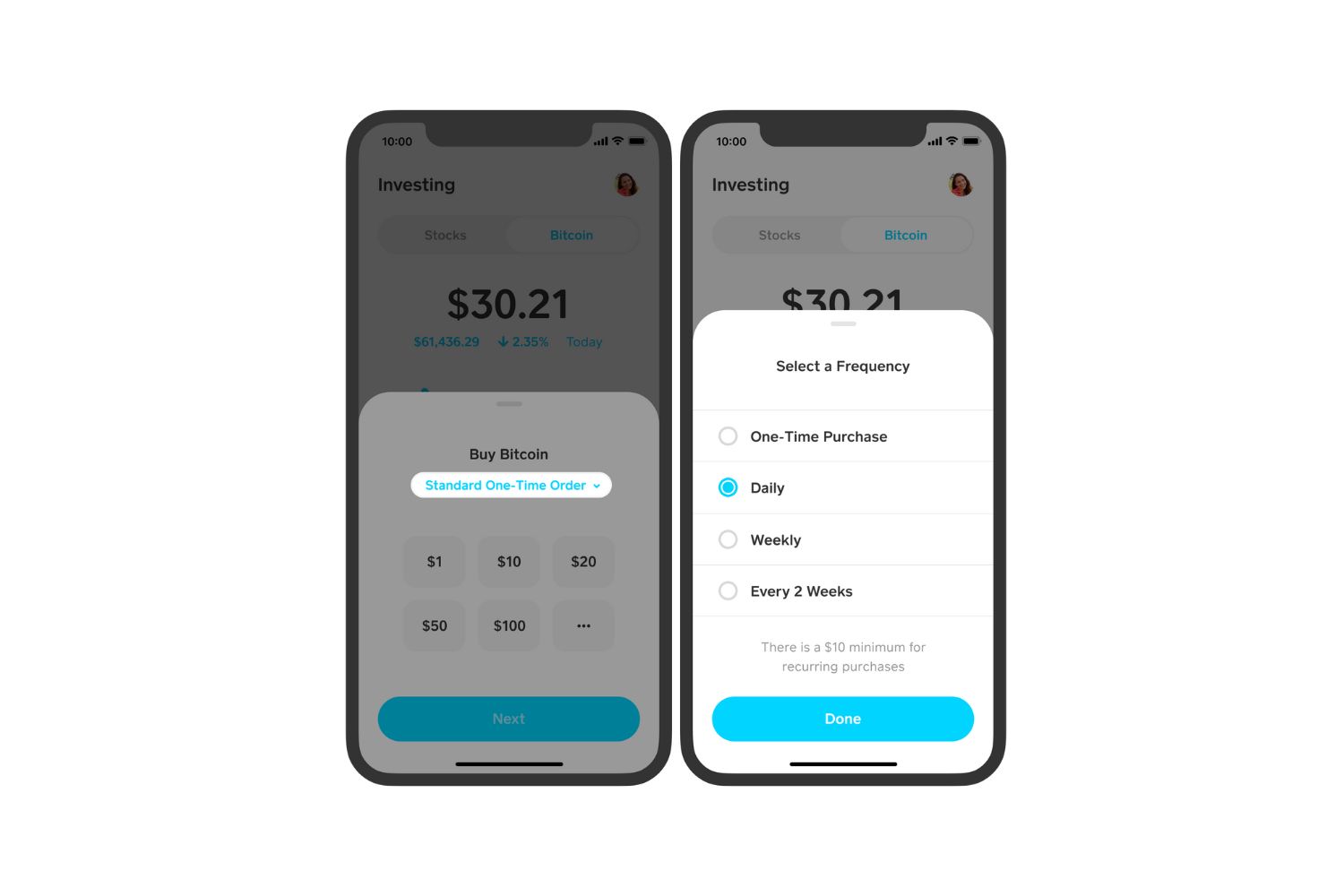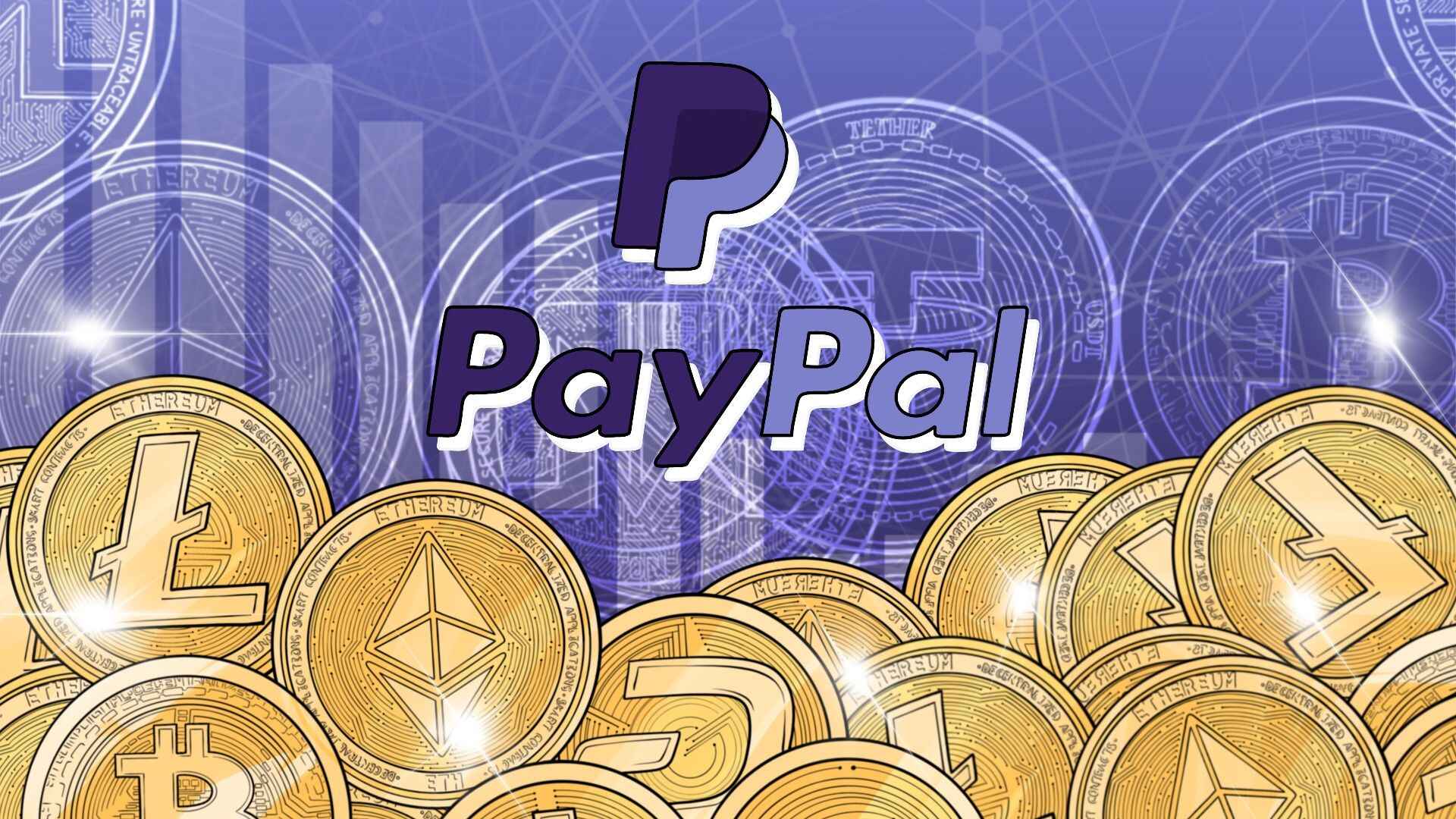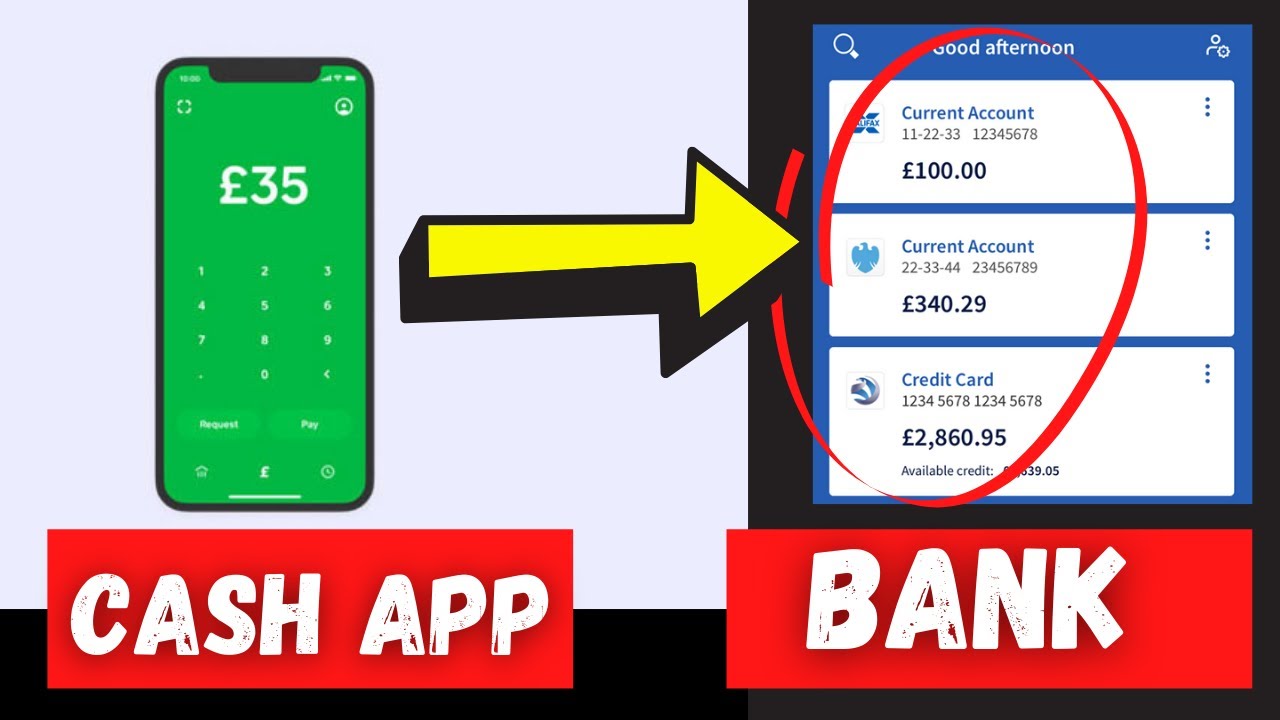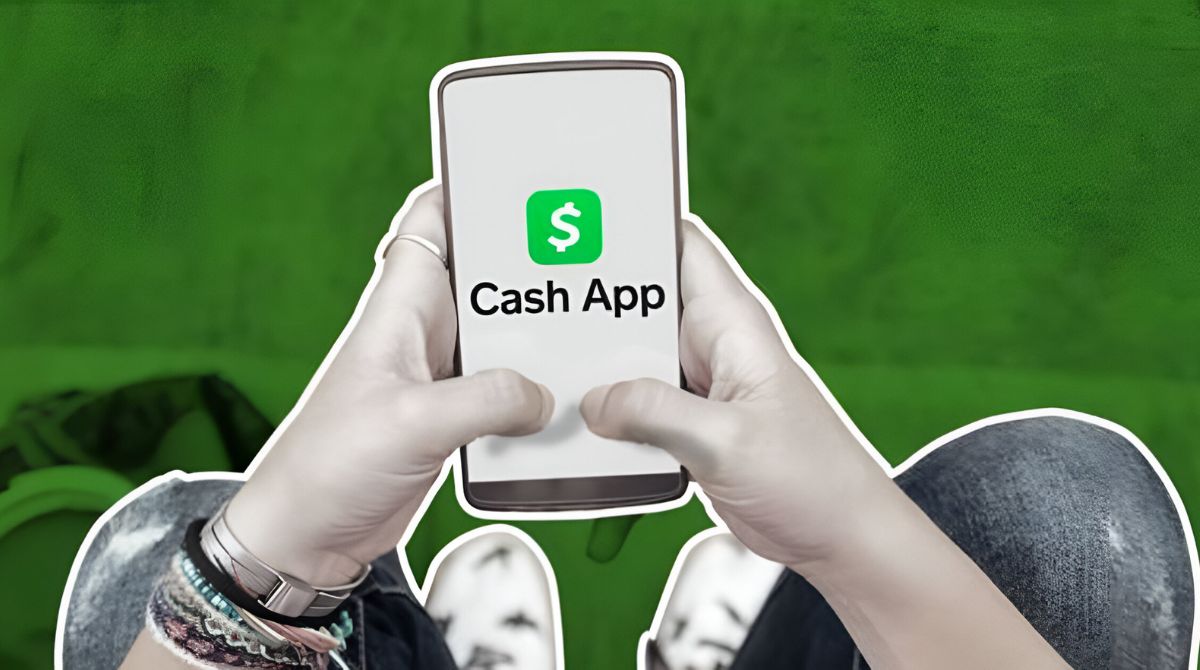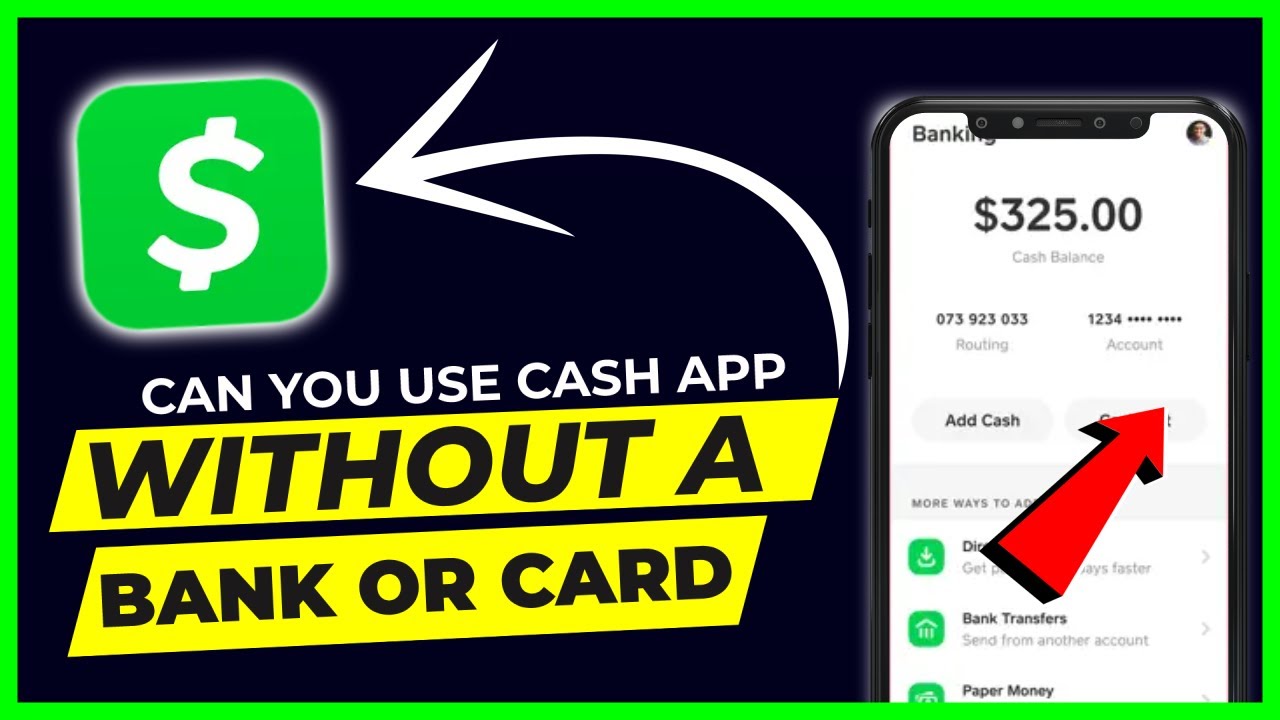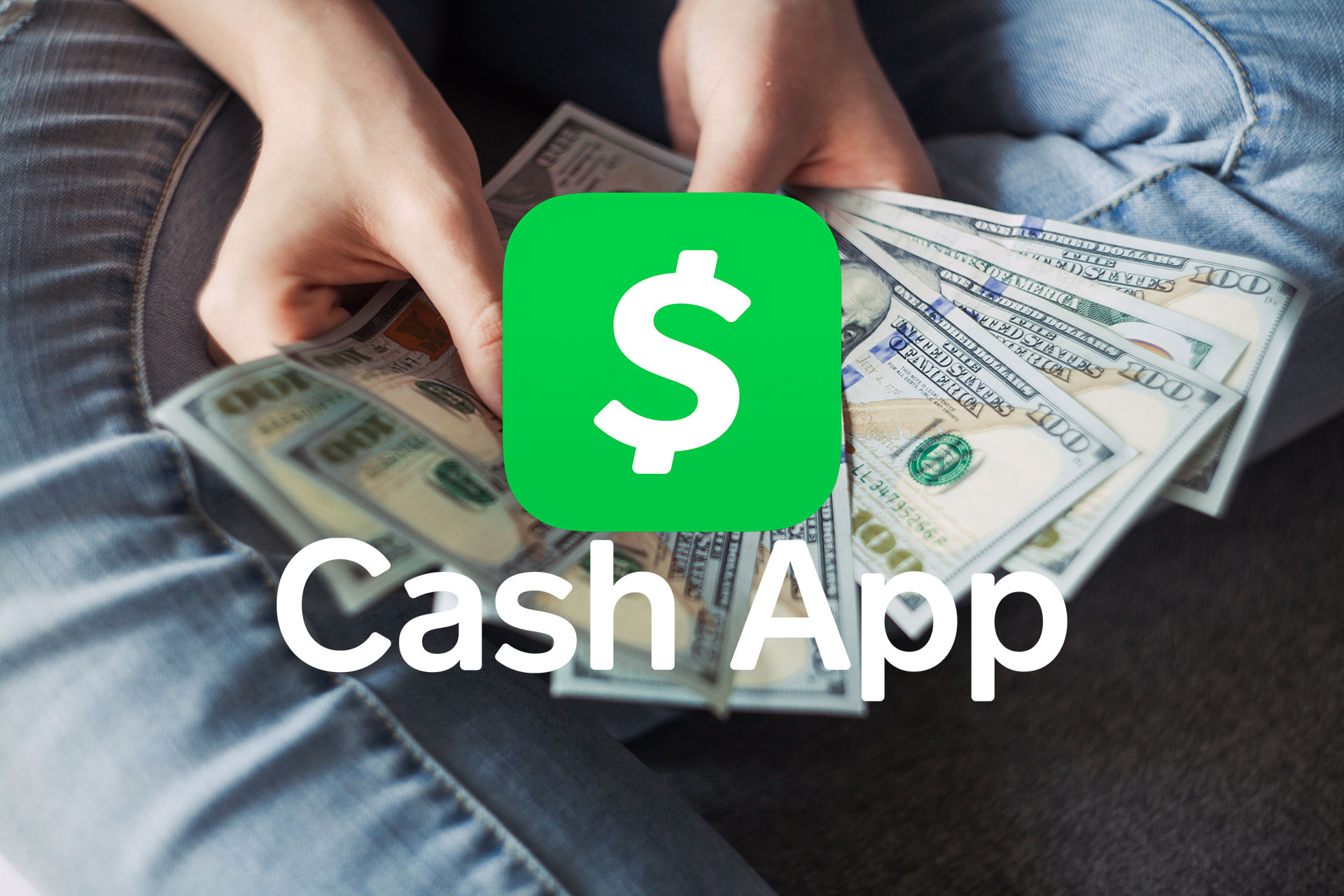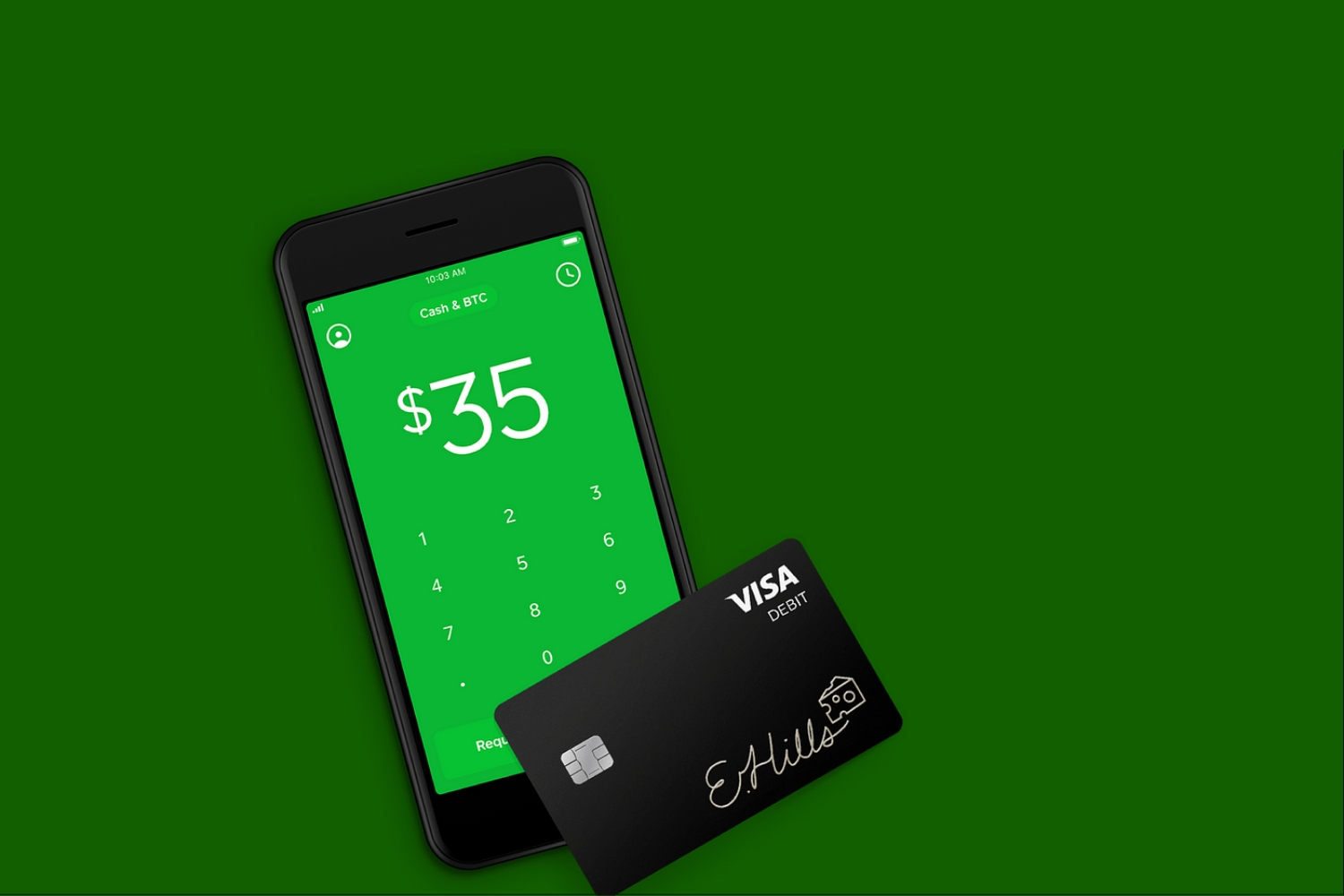Introduction
Welcome to the exciting world of Bitcoin! If you’re interested in learning how to transfer your Bitcoin to your bank account, you’ve come to the right place. Bitcoin, often referred to as a digital or cryptocurrency, has gained immense popularity in recent years. It offers a secure and decentralized way to store and transfer value without the need for intermediaries like banks.
While Bitcoin may seem complex at first, understanding how to transfer it to your bank account is a simple process once you have the necessary knowledge and tools. In this guide, we’ll walk you through the step-by-step process of transferring Bitcoin to your bank account, ensuring a smooth and hassle-free experience.
Before we dive into the details, let’s briefly explore what Bitcoin is and why it has become such a popular digital currency.
Bitcoin was introduced in 2009 by an anonymous individual or group of individuals known as Satoshi Nakamoto. It operates on a technology called blockchain, which is a decentralized ledger that records all Bitcoin transactions.
Understanding Bitcoin
Unlike traditional currencies issued by central banks, Bitcoin is not controlled by any government or financial institution. It exists solely in a digital form and is generated through a process called mining, where powerful computers solve complex mathematical problems to validate and add new transactions to the blockchain.
One of the key features of Bitcoin is its limited supply. There will only ever be 21 million Bitcoins in existence, making it a finite asset, unlike traditional currencies that can be printed indefinitely.
The value of Bitcoin is determined by supply and demand dynamics, much like any other asset or commodity in the market. Its price can be highly volatile, experiencing significant fluctuations within short periods.
To participate in the Bitcoin ecosystem, you’ll need a Bitcoin wallet to store and manage your Bitcoins. Let’s explore how to set up a Bitcoin wallet in the next section.
Understanding Bitcoin
Bitcoin is a digital currency that operates on a decentralized network called blockchain. Unlike traditional currencies issued by banks, Bitcoin is not controlled by any government or financial institution, making it a peer-to-peer form of money.
The concept of Bitcoin was introduced in 2009 by an anonymous individual or group of individuals known as Satoshi Nakamoto. It was created as a response to the financial crisis and aimed to provide an alternative to the conventional banking system.
The underlying technology behind Bitcoin is the blockchain, which is essentially a public ledger that records all Bitcoin transactions. This ledger is decentralized and maintained by a network of computers known as miners.
Mining is the process by which new Bitcoin is created and transactions are verified. Miners use powerful computers to solve complex mathematical problems, and in return, they are rewarded with new Bitcoin. This process ensures the security and integrity of the Bitcoin network.
One of the key features of Bitcoin is its limited supply. There will only ever be 21 million Bitcoins in existence. This scarcity, along with the increasing demand for Bitcoin, has contributed to its value appreciation over time.
Another important feature of Bitcoin is its pseudonymous nature. While transactions on the blockchain are public, the identities of the participants involved are not directly linked to their Bitcoin addresses. This aspect provides a degree of privacy to users.
Bitcoin can be used for various purposes, including online purchases, investments, and sending money internationally. Its borderless nature and low transaction fees make it an attractive option for cross-border transactions.
As a digital currency, Bitcoin offers a level of autonomy and control that is not possible with traditional currencies. Users have full control over their funds and can send or receive Bitcoin anytime, anywhere, without the need for intermediaries.
It’s important to note that while Bitcoin has gained mainstream attention, it is still a relatively new and evolving technology. Its price can be highly volatile, and it’s crucial to understand the risks involved before getting involved in Bitcoin transactions.
In the next sections, we will explore how to set up a Bitcoin wallet and choose a reputable Bitcoin exchange platform to facilitate the transfer of Bitcoin to your bank account.
Setting up a Bitcoin Wallet
Before you can transfer Bitcoin to your bank account, you’ll need to set up a Bitcoin wallet. A Bitcoin wallet is a digital wallet that allows you to store, send, and receive Bitcoins securely.
There are various types of Bitcoin wallets available, each with its own unique features and level of security. Here are a few popular options:
1. Software Wallets
Software wallets are applications that you can download and install on your computer, smartphone, or tablet. They provide you with full control over your Bitcoin funds but also require you to take responsibility for the security of your wallet. Some popular software wallet options include Electrum, Exodus, and Jaxx.
2. Hardware Wallets
Hardware wallets are physical devices that store your Bitcoin private keys, which are required to access and sign transactions. These wallets offer a higher level of security since they store your private keys offline, away from potential hackers. Examples of popular hardware wallets are Ledger and Trezor.
3. Web Wallets
Web wallets are hosted wallets that are accessible through a web browser. They are convenient to use but come with a higher level of risk compared to software or hardware wallets since your private keys are stored online. It’s crucial to choose a reputable web wallet provider that has strong security measures in place. Blockchain.com and Coinbase are popular web wallet options.
When choosing a Bitcoin wallet, consider factors such as security, ease of use, backup options, and compatibility with your devices. Take the time to research and read reviews to ensure you select a wallet that suits your needs and preferences.
Once you have chosen a wallet, follow the setup instructions provided by the wallet provider. This typically involves creating a wallet account, setting a strong password, and securely backing up your wallet’s recovery phrase or private keys.
It’s important to note that losing access to your Bitcoin wallet or private keys can result in permanent loss of your funds. Therefore, it’s crucial to back up your wallet and store the backup in a safe and secure location.
With your Bitcoin wallet set up, you’re now ready to proceed to the next step: choosing a reputable Bitcoin exchange platform to facilitate the transfer of Bitcoin to your bank account.
Choosing a Bitcoin Exchange Platform
Once you have set up your Bitcoin wallet, the next step is to choose a reliable and reputable Bitcoin exchange platform. A Bitcoin exchange is an online marketplace where you can buy, sell, and trade Bitcoin for fiat currency, such as USD, EUR, or your local currency.
Factors to Consider
When selecting a Bitcoin exchange platform, there are several factors to consider:
1. Security: Look for an exchange platform that has top-notch security measures in place, such as two-factor authentication (2FA), encryption, and cold storage of funds.
2. Liquidity: A high level of liquidity ensures that you can easily buy or sell Bitcoin without experiencing significant price slippage. Check the trading volume and order book depth of the exchange to gauge its liquidity.
3. Reputation: Read reviews and do research to gauge the reputation of the exchange. Look for exchanges that have been serving the cryptocurrency community for a significant period and have a positive track record.
4. User-Friendliness: Consider the user interface and experience offered by the exchange platform. A user-friendly platform with intuitive navigation and clear instructions can make the buying and selling process smoother.
Types of Bitcoin Exchanges
There are different types of Bitcoin exchange platforms to choose from:
1. Centralized Exchanges: These are the most common type of Bitcoin exchange platforms. They operate as intermediaries between buyers and sellers and facilitate trading. Examples of popular centralized exchanges include Coinbase, Binance, and Kraken.
2. Decentralized Exchanges: These platforms operate on a peer-to-peer basis, allowing users to trade directly with each other without the need for a central authority. Decentralized exchanges provide more privacy and control over funds but can have lower liquidity compared to centralized exchanges. Examples of decentralized exchanges are Uniswap and SushiSwap.
3. Peer-to-Peer Exchanges: These platforms connect buyers and sellers directly, allowing for the negotiation of prices and terms. Peer-to-peer exchanges often offer a wide range of payment options, making it convenient to buy and sell Bitcoin. LocalBitcoins and Paxful are popular peer-to-peer exchange platforms.
Consider your trading preferences, security needs, and ease of use when deciding on the type of exchange platform you want to use.
It’s also important to note that different exchanges may have different fees, deposit methods, and verification requirements. Take the time to compare these factors before making a decision.
With the Bitcoin exchange platform chosen and your account created, you’re now ready to transfer your Bitcoin to your exchange account. We’ll cover the process in the next section.
Transferring Bitcoin to Your Exchange Account
Now that you have chosen a Bitcoin exchange platform, it’s time to transfer your Bitcoin from your wallet to your exchange account. This step is necessary so that you can sell or trade your Bitcoin for fiat currency on the exchange.
Step-by-Step Process
Here is a step-by-step guide on how to transfer Bitcoin to your exchange account:
1. Log in to Your Exchange Account: Visit the website or open the app of your chosen Bitcoin exchange platform and log in using your credentials.
2. Find Your Bitcoin Deposit Address: Look for the “Deposit” or “Wallet” section in your exchange account. Locate your Bitcoin deposit address, which is a unique string of letters and numbers assigned to your account.
3. Copy Your Bitcoin Deposit Address: Copy your Bitcoin deposit address, either by clicking on the provided button or using the copy function. Ensure that you have copied the address correctly to avoid any mistakes.
4. Open Your Bitcoin Wallet: Launch your Bitcoin wallet, whether it is a software wallet, hardware wallet, or web wallet. Navigate to the “Send” or “Withdraw” section of your wallet.
5. Paste Your Bitcoin Deposit Address: In the “Recipient” or “Address” field of your wallet, paste the Bitcoin deposit address you copied from your exchange account. Double-check that the address matches exactly to avoid sending your Bitcoin to the wrong destination.
6. Enter the Amount: Specify the amount of Bitcoin you want to transfer to your exchange account. Ensure that you have enough funds in your wallet to complete the transaction, taking into account any network fees that may apply.
7. Review and Confirm: Take a final look at the details, including the amount and recipient address. Verify that everything is accurate before proceeding with the transaction.
8. Authorize the Transaction: Depending on your wallet, you may need to enter your wallet password or provide any necessary authentication to authorize the Bitcoin transfer.
9. Wait for Confirmation: Once the transaction is submitted, you will need to wait for the Bitcoin network to confirm it. This process usually takes a few minutes to a couple of hours, depending on network congestion.
10. Check Your Exchange Account: Once the transaction is confirmed on the blockchain, check your exchange account to ensure that the Bitcoin has been successfully deposited into your account. The balance should reflect the amount you transferred.
It’s important to note that the time it takes for the Bitcoin transfer to be confirmed can vary, so be patient. If you encounter any issues or delays, you can reach out to the customer support of your chosen exchange for assistance.
With your Bitcoin successfully transferred to your exchange account, you can now proceed to sell, trade, or hold your Bitcoin based on your investment or trading strategy. We will cover the process of selling Bitcoin on the exchange in the next section.
Selling Bitcoin on the Exchange
Once your Bitcoin has been transferred to your exchange account, you have the option to sell it for fiat currency, such as USD, EUR, or your local currency. Selling Bitcoin on an exchange platform is a straightforward process that allows you to convert your digital currency into traditional money.
Step-by-Step Process
Here is a step-by-step guide on how to sell Bitcoin on the exchange:
1. Log in to Your Exchange Account: Visit your chosen Bitcoin exchange platform and log in using your credentials.
2. Navigate to the Sell/Buy Section: Look for the “Sell” or “Trade” section on the exchange platform. This is where you can initiate the process of selling your Bitcoin.
3. Choose the Bitcoin Pair: Select the trading pair that involves Bitcoin and the fiat currency you wish to receive. For example, if you want to sell Bitcoin for USD, choose the BTC/USD trading pair.
4. Enter the Amount: Specify the amount of Bitcoin you want to sell. You can either enter the amount in Bitcoin or the equivalent amount in fiat currency. Ensure that you have enough Bitcoin available in your account for the transaction.
5. Set the Selling Price: Decide on the price at which you want to sell your Bitcoin. You can choose the current market price or set a specific price if you want to execute a limit order. Keep in mind that market orders are executed at the current market price, while limit orders are executed only if the market reaches your specified price.
6. Review and Confirm: Double-check the details of your sell order, including the amount of Bitcoin, the selling price, and the trading pair. Make sure everything is accurate before proceeding.
7. Place the Sell Order: Click on the “Sell” or “Place Order” button to submit your sell order. The exchange will then execute your order based on the market conditions or your specified price.
8. Wait for the Order to Be Fulfilled: Depending on market conditions and liquidity, your sell order may be executed immediately or take some time to be filled. You can monitor the status of your order in the “Trade” or “Order History” section of your exchange account.
9. Verify the Successful Sale: Once your sell order is filled, verify that the Bitcoin has been sold and you have received the fiat currency equivalent in your exchange account. The balance should reflect the amount you sold.
It’s important to note that exchange platforms may have different fee structures, so be sure to check and understand the fees associated with selling Bitcoin on your chosen exchange. These fees can vary based on factors such as the exchange’s trading volume, your trading volumes, and the type of order you place.
With the sale of your Bitcoin complete, you can now proceed to withdraw the funds to your bank account, which we will cover in the next section.
Withdrawing Funds to Your Bank Account
After successfully selling your Bitcoin on the exchange, you have the option to withdraw the funds to your bank account. Withdrawing funds allows you to convert your digital currency earnings into traditional fiat currency, providing easy access to your funds for personal or business use.
Step-by-Step Process
Here is a step-by-step guide on how to withdraw funds from your exchange account to your bank account:
1. Log in to Your Exchange Account: Visit your chosen Bitcoin exchange platform and log in using your credentials.
2. Navigate to the Withdraw/Sell Section: Look for the “Withdraw” or “Sell” section on the exchange platform. This is where you can initiate the process of withdrawing your funds.
3. Select Your Bank Account: Choose the bank account you want to transfer the funds to. If you haven’t already linked your bank account to your exchange account, you may need to add the account details and go through a verification process.
4. Enter the Withdrawal Amount: Specify the amount of funds you want to withdraw from your exchange account. Make sure that you have sufficient funds available for withdrawal.
5. Confirm the Withdrawal: Review the details of your withdrawal request, including the withdrawal amount and the selected bank account. Double-check that the information is accurate before proceeding.
6. Submit the Withdrawal Request: Click on the “Withdraw” or “Submit” button to initiate the withdrawal request. The exchange may require you to confirm the withdrawal through a verification process or by entering a unique code.
7. Wait for the Funds to Arrive: The processing time for the withdrawal can vary depending on the exchange and your bank’s policies. It may take anywhere from a few hours to a couple of days for the funds to appear in your bank account.
8. Verify the Successful Withdrawal: Once the funds have arrived in your bank account, verify that the correct amount has been transferred. Check your bank statement or online banking platform to ensure the transaction has been processed successfully.
It’s important to note that some exchanges may charge withdrawal fees, so be sure to check the fee structure and factor this into your decision-making. Additionally, keep in mind that bank transfers may also incur fees, and the amount of time it takes for the funds to arrive can vary depending on your bank’s policies and the country in which you hold your bank account.
With the funds successfully withdrawn to your bank account, you can now use the funds for your intended purposes, whether it’s making purchases, paying bills, or saving for the future.
Understanding Conversion Rates and Fees
When transferring Bitcoin to your bank account or selling it on an exchange, it’s important to understand the concept of conversion rates and fees. Conversion rates determine the exchange rate between Bitcoin and fiat currency, while fees are charges imposed by exchanges and payment processors for their services.
Conversion Rates
Conversion rates represent the value of Bitcoin in relation to fiat currency. These rates are determined by supply and demand dynamics in various markets, as well as the liquidity of Bitcoin exchanges. The rates can fluctuate frequently due to market conditions, resulting in varying values for Bitcoin at different times.
When transferring Bitcoin to your bank account, the conversion rate will affect the final amount of fiat currency you receive. It’s important to stay updated on the current conversion rate before initiating any transfers, as it can significantly impact the value of your Bitcoin.
Exchanges generally display the current conversion rate before you proceed with a transaction. However, it’s advisable to compare rates across different exchanges to ensure you’re getting the most favorable rate possible.
Fees
When engaging in Bitcoin transactions, you may encounter fees imposed by exchanges and payment processors. These fees can vary based on several factors, including the type of transaction and the platform you’re using.
The fees associated with Bitcoin transactions can be categorized as follows:
1. Network Fees: Also known as miner fees, network fees are charged by the Bitcoin network to prioritize and confirm transactions. The fee amount is determined by network congestion and the size of your transaction. Higher fees can result in faster confirmation times, while lower fees may take longer.
2. Exchange Fees: Exchange platforms charge fees for their services, including buying and selling Bitcoin, depositing funds, and withdrawing funds. These fees can vary based on the exchange and may be calculated as a percentage of the transaction amount or a fixed fee per transaction.
3. Payment Processor Fees: If you’re using a payment processor to facilitate your Bitcoin transactions, such as when selling Bitcoin on a peer-to-peer platform, there may be additional fees imposed by the payment processor. These fees are typically calculated as a percentage of the transaction amount.
It’s important to consider the fees associated with your Bitcoin transactions, as they can impact the overall value of your transactions and potentially reduce your profits. Take the time to compare fees across different platforms and choose the option that offers the most favorable fees for your specific needs.
Keep in mind that while fees are an inevitable aspect of Bitcoin transactions, they serve the purpose of supporting the infrastructure and security of the network, as well as ensuring the smooth operation of exchanges and payment processors.
By understanding conversion rates and fees, you can make informed decisions when selling Bitcoin and transferring funds to your bank account. Consider these factors carefully to maximize the value of your transactions and minimize unnecessary costs.
Ensuring Security and Privacy
When it comes to dealing with Bitcoin and conducting financial transactions, ensuring security and privacy are of utmost importance. Here are some essential steps to take to protect your assets and personal information:
1. Secure your Bitcoin Wallet
Choose a reputable and secure Bitcoin wallet that offers robust security features. Enable two-factor authentication (2FA) to add an extra layer of protection to your wallet. Regularly update your wallet software and use a strong, unique password to prevent unauthorized access.
2. Implement Strong Security Measures
Use a reliable antivirus and firewall software on your devices to protect against malware, phishing attempts, and other cyber threats. Be cautious when clicking on suspicious links or downloading attachments, as they may contain malware that can compromise your Bitcoin wallet and personal information.
3. Keep Your Private Keys Secure
Your Bitcoin private keys are the access keys to your funds. Store them securely offline, preferably in a hardware wallet or paper wallet. Avoid sharing your private keys with anyone and be cautious of phishing attempts requesting your private key information.
4. Use Secure and Reputable Exchanges
When choosing a Bitcoin exchange platform, prioritize security and reputation. Look for exchanges that implement strong security measures, such as two-factor authentication, encryption, and cold storage of funds. Read reviews and assess the platform’s track record in terms of security breaches and user feedback.
5. Be Mindful of Public Transactions
Bitcoin transactions are recorded on a public ledger called the blockchain. While the transactions are pseudonymous, the details can potentially be traced back to your identity if precautions are not taken. Consider using additional privacy measures such as using Bitcoin mixers or privacy-focused wallets to enhance anonymity.
6. Educate Yourself
Stay informed about the latest security practices and developments in the Bitcoin ecosystem. Regularly update yourself on potential threats and security vulnerabilities. Follow trustworthy sources of information, participate in online communities, and engage with other Bitcoin enthusiasts to learn from their experiences.
7. Be Wary of Phishing Attacks
Phishing attacks are common in the cryptocurrency space. Be cautious of emails, websites, or ads that appear suspicious or request your personal information. Always verify the authenticity of the source before providing any sensitive data.
8. Enable Account Notifications
Set up account notifications on your Bitcoin exchange platform and wallet provider to receive alerts about withdrawals, login attempts, and other activities. This will help you detect any unauthorized access or suspicious activity promptly.
9. Keep Software and Firmware Updated
Regularly update your software wallets, hardware wallets, and operating systems to benefit from the latest security patches and enhancements. These updates often address known vulnerabilities and improve the overall security of your devices.
10. Diversify Your Bitcoin Storage
Consider diversifying your Bitcoin storage by keeping a portion of your funds in different wallets or exchange platforms. This reduces the risk of a single point of failure and provides added security in case one wallet or platform is compromised.
By following these security and privacy practices, you can minimize the risk of theft, fraud, and privacy breaches. It’s essential to remain vigilant and proactive in safeguarding your Bitcoin and personal information throughout your journey in the cryptocurrency landscape.
Tips for a Smooth Transaction
To ensure a smooth and successful Bitcoin to bank account transfer, as well as selling Bitcoin on an exchange, consider the following tips:
1. Plan Ahead
Before initiating any transactions, have a clear plan in mind. Determine the amount of Bitcoin you want to transfer or sell, the desired conversion rate, and your intended use for the funds. This helps streamline the process and minimizes delays or uncertainties.
2. Stay Informed
Stay updated on the latest news and developments in the Bitcoin market. Keep a close eye on the price fluctuations, network congestion, and any regulatory changes that may impact your transactions. Being informed will enable you to make informed decisions and adapt accordingly.
3. Watch the Market
If you plan to sell Bitcoin for a specific price on an exchange, closely monitor the market conditions and price movements. Set realistic expectations and be flexible in adapting to changing market conditions. Timing your transactions strategically can potentially lead to more favorable outcomes.
4. Consider Transfer Times and Fees
Be aware of the processing times and fees associated with each step of the transfer process. Network fees, exchange fees, and bank transfer fees can all impact the final amount you receive. Take these factors into account when deciding on the timing of your transactions.
5. Double-Check Transaction Details
Before confirming any transactions, carefully review all the details, including addresses, amounts, and fees. Ensure that you have entered the correct information to avoid any mistakes or potential losses of funds.
6. Start with Small Transactions
If you’re new to Bitcoin transactions or a specific exchange platform, consider starting with small transactions to familiarize yourself with the process. This allows you to gain confidence and experience before engaging in larger transactions.
7. Maintain Records
Keep detailed records of your Bitcoin transactions, including timestamps, transaction IDs, and any relevant communications. These records can be useful for reference, accounting purposes, or in the event of any disputes or discrepancies.
8. Seek Support and Assistance
If you encounter any issues or have questions during the process, don’t hesitate to reach out to the customer support teams of your Bitcoin wallet provider, exchange platform, or payment processor. They are there to assist you and provide guidance in navigating the transaction process.
9. Be Patient
Bitcoin transactions, especially transfers and withdrawals, may take some time to process due to network confirmations and bank processing times. Exercise patience and allow sufficient time for the transactions to be completed, factoring in any potential delays.
10. Stay Cautious and Secure
Throughout the process, prioritize security and privacy. Be cautious of potential scams, phishing attempts, and suspicious websites or apps. Take necessary precautions to protect your private keys, personal information, and funds throughout the transaction process.
By following these tips, you can enhance the likelihood of a smooth and successful Bitcoin to bank account transfer, as well as selling Bitcoin on an exchange. The more prepared and informed you are, the better your overall experience will be in managing your Bitcoin assets.
Conclusion
Transferring Bitcoin to your bank account can offer liquidity and convenience, allowing you to convert your digital assets into traditional fiat currency. Selling Bitcoin on an exchange provides an opportunity to capitalize on market movements and potentially generate profits. By understanding the necessary steps and considerations involved in these processes, you can ensure smoother and more successful transactions.
It is essential to start by setting up a secure Bitcoin wallet and choosing a reputable exchange platform. Take into account factors such as security measures, liquidity, user-friendliness, and fees when selecting an exchange. With your Bitcoin transferred to the exchange, selling it for fiat currency becomes a straightforward process that involves determining the conversion rate, setting the selling price, and confirming the order.
Once the Bitcoin has been sold, you can withdraw the funds to your bank account. Consider the processing times and fees associated with the withdrawal process, as they may vary depending on the exchange and your bank’s policies. Ensure that you review all transaction details carefully to avoid errors or potential losses.
Throughout the entire process, prioritize security and privacy by securing your wallets, implementing strong security measures, and staying updated on potential threats and best practices. Be mindful of the conversion rates, fees, and potential risks associated with Bitcoin transactions.
By following the tips provided and staying informed, you can enhance the security of your Bitcoin transactions and ensure a smoother experience. Remember to exercise patience, seek assistance when needed, and maintain accurate records of your transactions.
Bitcoin and cryptocurrencies are constantly evolving, and it’s important to stay up to date with the latest developments and regulations. Embrace the exciting possibilities that Bitcoin offers while always being cautious and responsible in your actions.
With these guidelines in mind, you’re ready to navigate the world of Bitcoin transactions and make educated decisions that align with your financial goals. Embrace the opportunities, exercise caution, and enjoy the benefits of this innovative digital currency.









